

Reading Curriculum For Diverse Learners - Inclusive Reading Program. Amplify Reading is built on the conviction that equitable instruction is vital to an effective program.
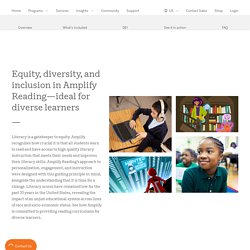
Literacy programs must provide all students with opportunities to achieve academic success; texts must be relevant to culturally diverse classrooms. Amplify Reading’s adaptive content therefore provides a personalized learning path for reading skill practice with adaptive supports that allow every student, including English Language Learners and students who may be struggling to learn to read, to acquire the skills they need to be successful readers of rich, diverse, and increasingly complex content. The instruction provided incorporates documented principles of effective instructional delivery; the activities engage students in multiple opportunities to practice critical skills at an appropriate pace with consistent feedback and prioritize student engagement and motivation, helping students to see their own growth toward reading goals.
Picture Books That Promote Diversity and Inclusion. It is important that every preschool teacher ( and parent) have access to great picture books.
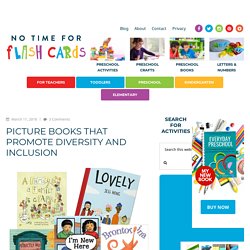
Picture books that not only explore the alphabet or counting or our students’ favorite characters. You also need books that help children develop their own character. Social-emotional learning is an important, if not the most important part of early childhood education. Critical Literacy and Transgender Topics. Empathy & Inclusion for ELL Students. Being an English Language Learner in the classroom can be a very overwhelming experience for students regardless of age.
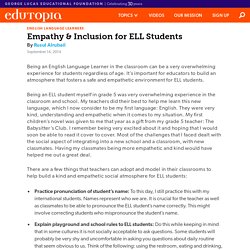
It’s important for educators to build an atmosphere that fosters a safe and empathetic environment for ELL students. Being an ELL student myself in grade 5 was very overwhelming experience in the classroom and school. My teachers did their best to help me learn this new language, which I now consider to be my first language: English. Build Inclusive & Antiracist US History Activities with These 10 Questions. Last month, I detailed some actionable tips for guiding you to be more antiracist and inclusive in your overall instruction and classroom, so that is a great place to start if you want to conduct an audit of your overall classroom, curriculum, and teaching approach.
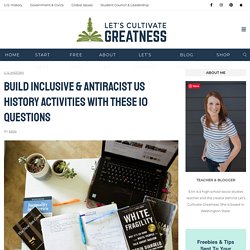
If you are ready to more carefully examine the day-to-day activities and resources you use with your middle or high school history students, then these 10 questions below will help guide you. It’s important to note that being antiracist and inclusive aren’t statuses achieved, but ones that must be continually worked on.
The Culturally Inclusive Classroom: An Interview with Dr Hines-Gaither. We Need Diverse Books . . . But Are We Willing to Discuss Them With Our Kids? - A Fuse #8 Production. For my birthday my husband picked me up a copy of the bestselling book NurtureShock by Po Bronson and Ashley Merryman.
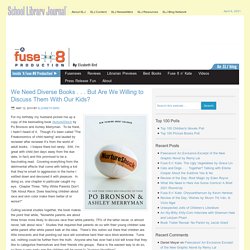
To be frank, I hadn’t heard of it. Though it’s been called “The Freakonomics of child rearing” and lauded by reviewer after reviewer it’s from the world of adult books. I traipse there but rarely. Still, I’m great with child (ten days away from the due date, in fact) and this promised to be a fascinating read. Tomás Rivera Book Award : Texas State University. Jane Addams Peace Association. 2014 Rainbow Book List « Rainbow Book List. The Rainbow Project, a product of the ALA Gay, Lesbian, Bisexual, and Transgender Round Table (GLBTRT) and Social Responsibilities Round Table (SSRT), proudly announces the 2014 Rainbow Book List.
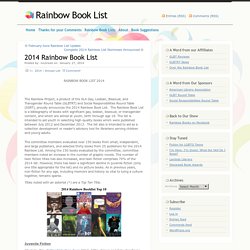
The Rainbow Book List is a bibliography of books with significant gay, lesbian, bisexual, or transgender content, and which are aimed at youth, birth through age 18. The list is intended to aid youth in selecting high-quality books which were published between July 2012 and December 2013. The list also is intended to aid as a collection development or reader’s advisory tool for librarians serving children and young adults. Disability in Kidlit — Reviews, articles, and more about the portrayal of disabilities in children's fiction. Islam in the Classroom. Published in SLJ’s October 2010 print issue, but still relevant today, the following article highlights resources that classroom teachers, librarians, and parents can use to broaden children’s worldview and prompt discussions about current events and news.
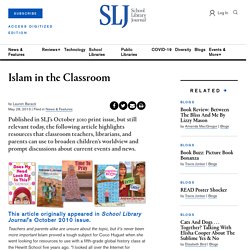
This article originally appeared in School Library Journal's October 2010 issue. Teachers and parents alike are unsure about the topic, but it’s never been more important Islam proved a tough subject for Coco Huguet when she went looking for resources to use with a fifth-grade global history class at the Hewitt School five years ago. Making School a Safe Place for LGBTQ Students. Voice of Witness: Bring the Power of Oral History to Your Classroom. About the Author – CB Lee. Biography CB Lee is a Lambda Literary Award nominated writer of young adult science fiction and fantasy.
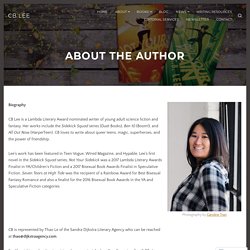
Her works include the Sidekick Squad series (Duet Books), Ben 10 (Boom!) Inclusive Literacy Learning. Adapted from: P.
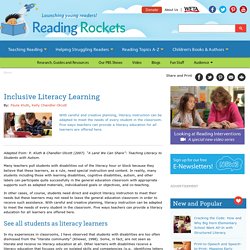
Kluth & Chandler-Olcott (2007). “A Land We Can Share”: Teaching Literacy to Students with Autism. Many teachers pull students with disabilities out of the literacy hour or block because they believe that these learners, as a rule, need special instruction and content. In reality, many students including those with learning disabilities, cognitive disabilities, autism, and other labels can participate quite successfully in the general education classroom with appropriate supports such as adapted materials, individualized goals or objectives, and co-teaching.